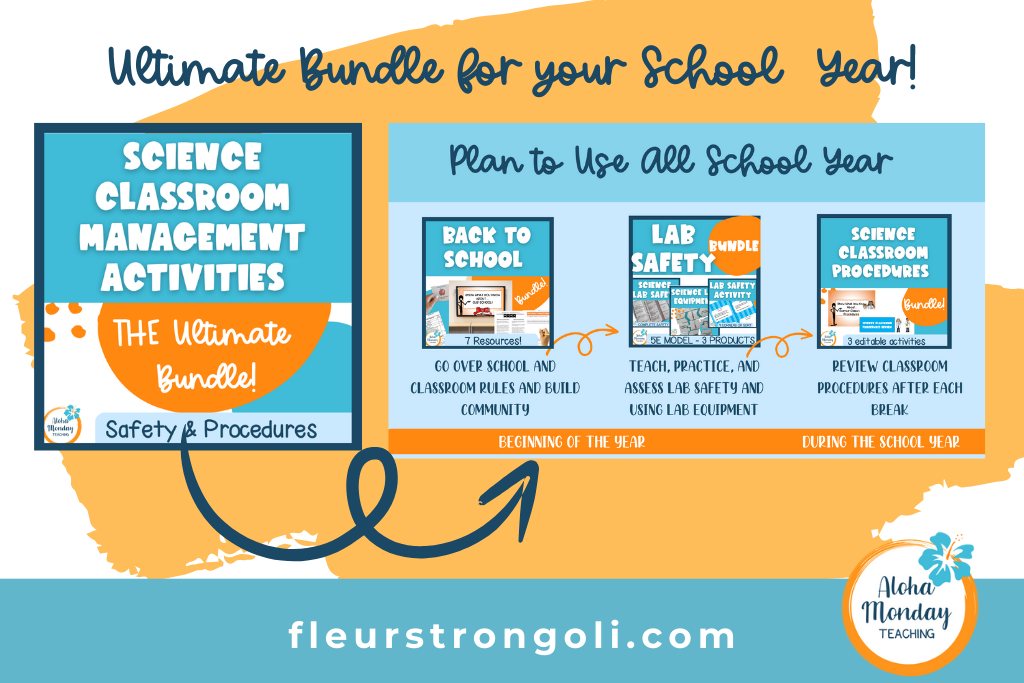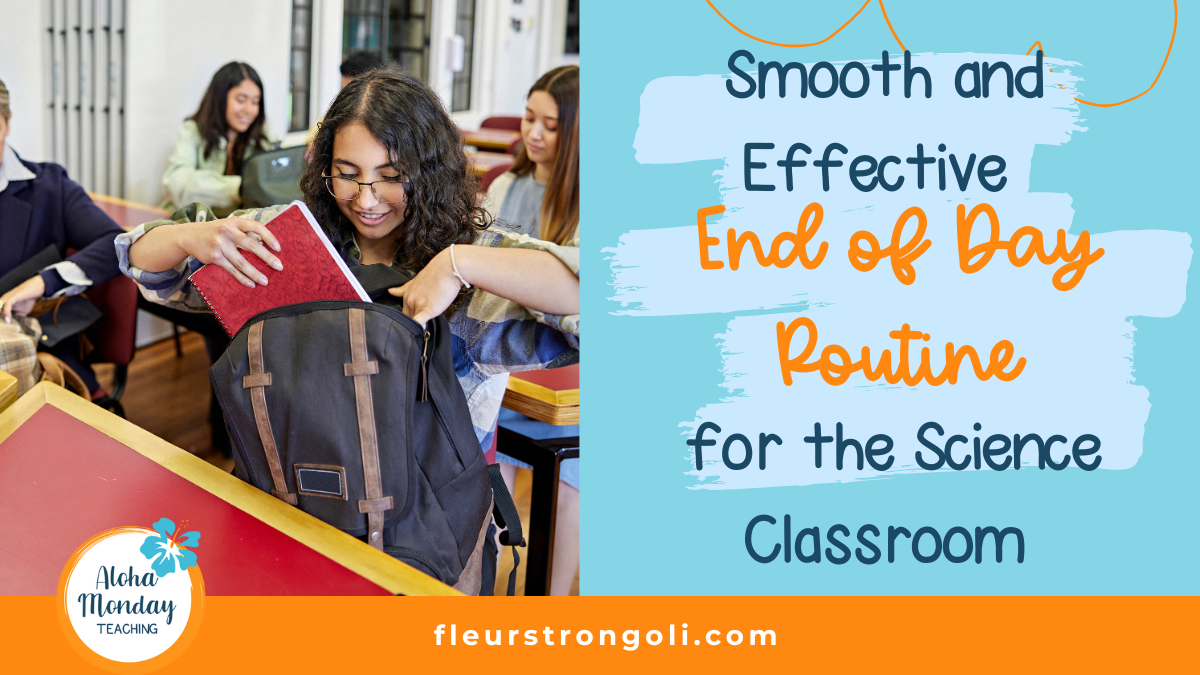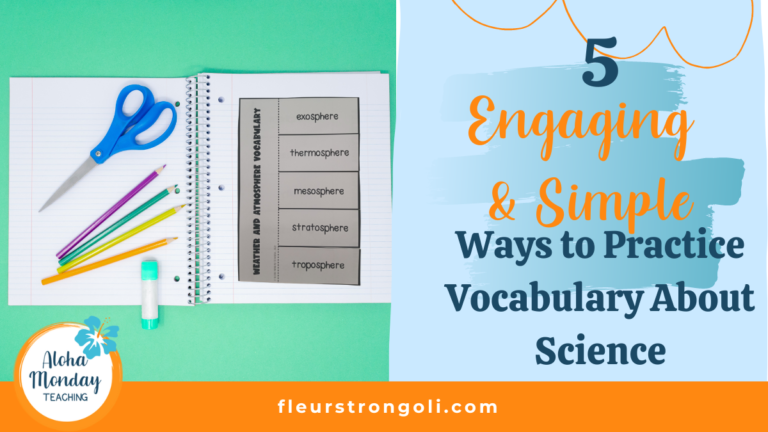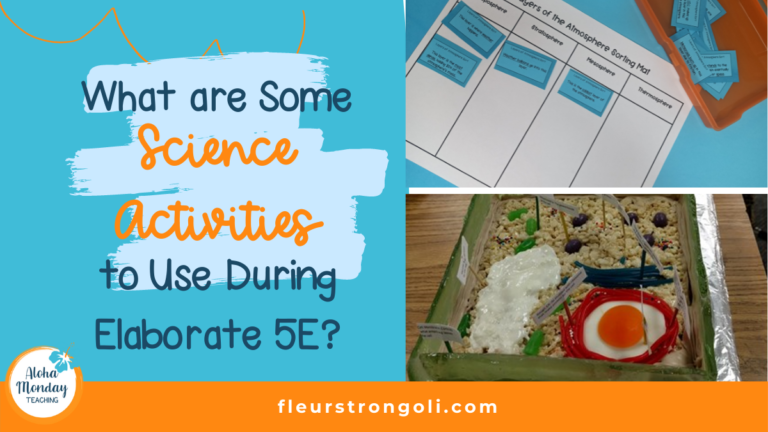Smooth and Effective End of Day Routine for the Science Classroom
You’ve taught all class period and it’s time for the end of day routine (for that class period)! Some days feel so hectic and rushed when packing up and cleaning up. Yet there are some that run a lot smoother. How do we make sure our end of day routine is a smooth and effective one each class period?
In the first two blog posts in this series, I shared an overview of routines and the beginning of class routines. Then we went over the “during class” routines. This is the final blog post in the series where we are in the “end of day” routine.
First six blog posts in the classroom routines series:
What Are the Important Routines for Classroom Management in the Science Class?
How to Have a Successful Beginning of Class Each Day
3 Ways to Take Notes in Class that Keep Students Engaged
5 Independent Work Ideas and the Routines Students Need to Know
3 Ways to Run Your Science Lab Day with Science Lab Safety in Mind
5 Areas to Ensure Science Best Practices in the Classroom
In this post
We will talk about why we need to have an end of day routine. Then we’ll go over some routines for exit tickets, cleaning up, packing up, and dismissal.
Be sure to get your free guide 7 Daily Must-Do Routines to Run Your Science Classroom Like a Pro today!

Disclosure: This post may contain some affiliate links for your convenience. As an Amazon Associate I earn from qualifying purchases with no cost to you.
Why have an end of day routine?
An end of day routine is necessary to wrap things up in a calm and effective way. Of course, it’s understandable that some days may not look the way you want it to, and that is okay! At least that is what I tell myself.
A well-structured end of day routine includes an exit ticket (or some way to wrap up the lesson), a time to clean up, and a safe and organized dismissal procedure. The exit ticket and cleaning can happen simultaneously or you can have kids complete an exit ticket, have a discussion, and then clean up.
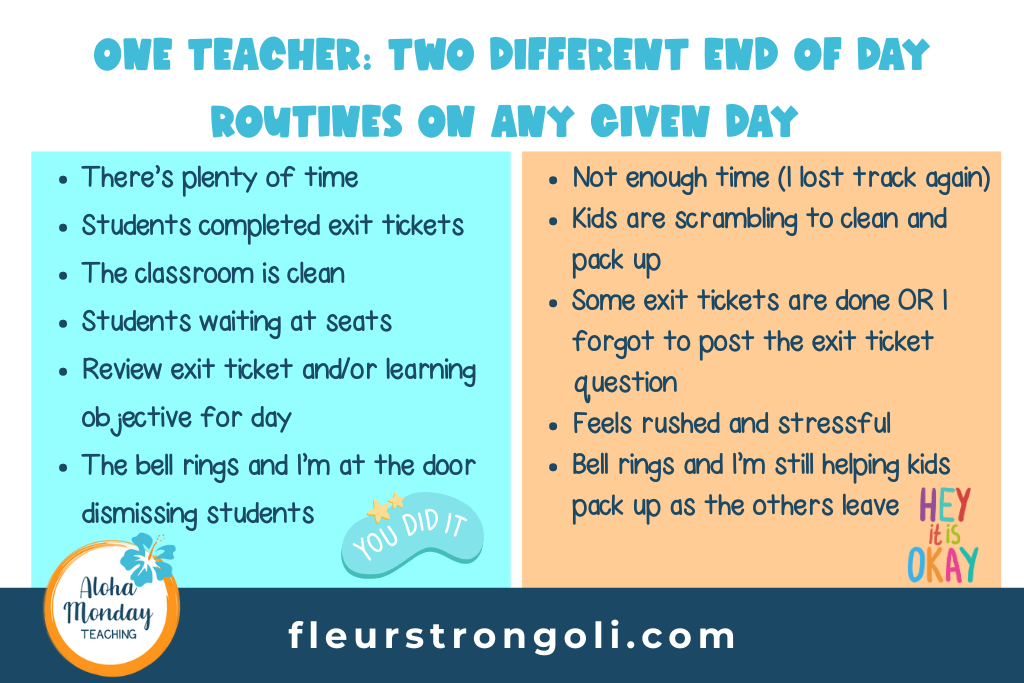
What does your end of day look like?
On a good day, when I’m keeping track of time and being intentional, I give the kids about 7 minutes for our end of day routine. I post the exit ticket on the screen, they complete it, clean up, and wait at their desks. We do a quick discussion then I dismiss them as the bell rings.
I notice the difference when the kids are working and I lose track of time. This happens when we have a different schedule or they’re working so well and I am helping students. Then our end of day routine is rushed. The kids are cleaning up as quickly as they can. Laptops are not getting put away correctly. There’s still a mess under a few desks. And I don’t even have time to check! I’d say that’s a pretty hectic way to end class.
Ideally, we want to end class on a calmer note and have closure to the day’s lesson and activity. We want kids to have time to clean up properly, we can check for understanding through an exit ticket or a quick class discussion, and then the bell rings when we’re actually done.
So which sounds more like your classroom? Some days my class looks like the ideal one, and on other days, we are definitely rushed. It’s an area that I need to be more intentional with too.
Exit Tickets
When class is coming to an end, an exit ticket is something you can do to check for understanding. After students complete the exit ticket you can have them share a few responses or you can read them. Or you can use them to help you guide instruction or a review the next day.
Students should be able to complete an exit ticket within 2-3 minutes. There are different ways to have students complete them. I usually post a question on the screen and they write it on a piece of scratch paper with their name on it. Then they turn it in. I’ve also done a Google form that students complete. That works well if you’re already on the computers.
What kinds of questions should you ask? I normally connect the exit ticket with our learning objective or target that day. I also ask questions that have them reflect on their learning or what they accomplished in class.
Here are some examples of exit ticket items I have posted:
- How is an igneous rock formed?
- What are three organelles in a plant or animal cell?
- What is the difference between a plant and animal cell?
- Give an example of Newton’s first law of motion.
- Make a model of the water cycle and label it.
- What stations did you complete today?
- How did you handle group work today?
After they answer it, I ask for volunteers to share or I will pull a few papers and read them. I also sort them into piles so I know who understood the concept and who I need to check in with the next day.
If you aren’t using this yet, start with a simple question based on what the students are learning. Remember, an exit ticket should not be complicated or long. Routines students should know for the exit ticket are knowing where to find the exit ticket question, how to complete it (paper or computer), and how to turn it in.

Cleaning and Packing Up
This is the part of the end of day routine that might feel a little chaotic. Students are cleaning materials, putting computers away, packing up their things, turning in work, and asking you questions.
To make this run more smoothly, be sure to give them enough time to clean up. If they are working on a project or with materials that require more time to clean up, then be sure to give them extra minutes to do so. Otherwise, you’ll be left with a mess (trust me!).
Students should know where to return materials and work. Perhaps you have classroom jobs that students complete during this time. This might be someone who takes out the trash, makes sure laptops are plugged in, or wipes down tables.
On an ideal day, this time runs smoothly and students clean up their areas. Then they wait at their seats to be dismissed or to go over the exit ticket. When we have some time, I like to play short games with them.
Routines students should know are where to turn in work, what to do with unfinished work, how to put away materials, making sure their area (lab station, desk, floor) is clean, and what to do when they are done cleaning and packing up.
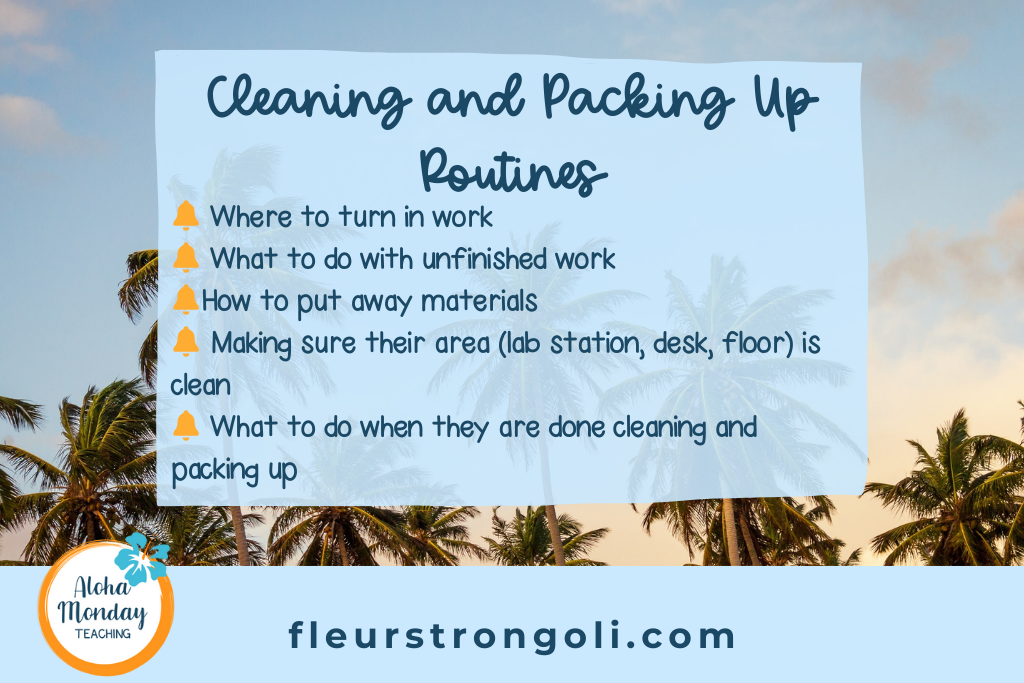
Dismissal
You’ve probably heard teachers say this or you might have said this yourself, “The bell doesn’t dismiss you, I do.” I know I have said that many times! How can we make sure that we are the ones dismissing them? By having our end of day routine well structured.
When we give students enough time to clean up, pack up, and go over an exit ticket, then the dismissal piece is still in our hands. Students are at their desks or tables, not crowding the door or lingering around the room.
Before the bell rings, be sure you are the one at the door. This will show the kids that you are indeed the one dismissing them, not the bell. You can also dismiss students by their table or group. I do that with certain classes. Other classes, I dismiss them and they all walk out while I hold the door.
Here are some of the routines students need to know: where to wait until dismissal and how to follow the directions when they are dismissed.
Wrap up
The end of day routine is something we want to be intentional with so it is effective and calmer. The parts to the end of day routine include an exit ticket, clean up, pack up, and dismissal. We talked about each and the routines students need to know.

Your Turn
What does your end of day routine look like and what would you like to improve? Reply and let me know!

Links
7 Daily Must-Do Routines to Run Your Science Classroom Like a Pro
What Are the Important Routines for Classroom Management in the Science Class?
How to Have a Successful Beginning of Class Each Day
3 Ways to Take Notes in Class that Keep Students Engaged
5 Independent Work Ideas and the Routines Students Need to Know
3 Ways to Run Your Science Lab Day with Science Lab Safety in Mind
5 Areas to Ensure Science Best Practices in the Classroom
Science Classroom Management Activities- the Ultimate Bundle – this resource is helpful all year long!
